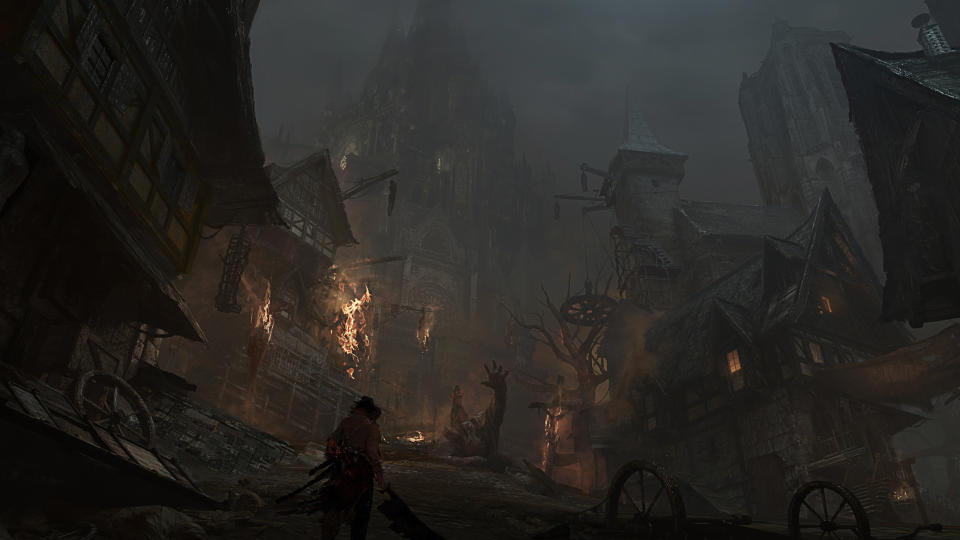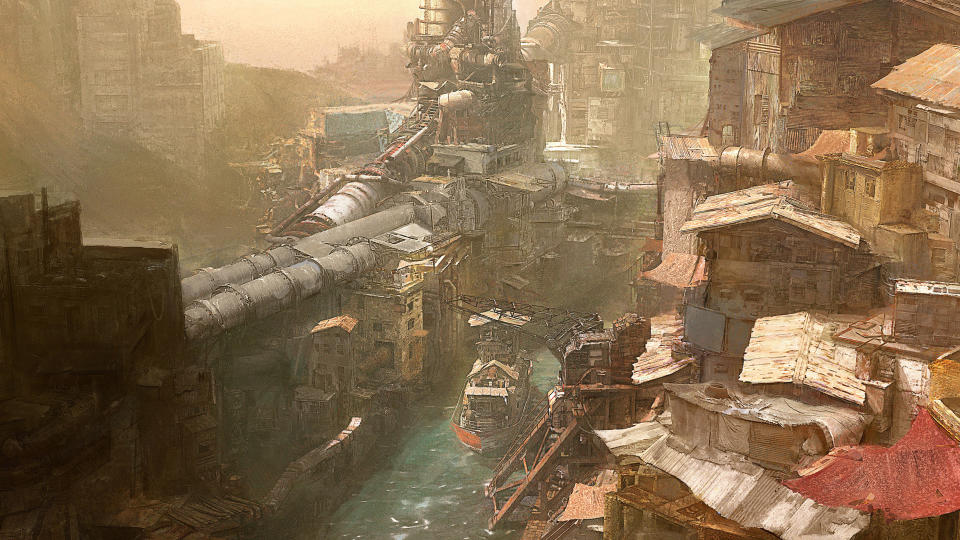Cinema 4D: everything you need to know

Quick menu

Jump to the quick list↴
1. A brief history
2. What is it?
3. Who's it for?
4. Pros and Cons
5. Must-know tools
6. The price
7. What do I need to run Cinema 4D?
FAQs
Getting started in Cinema 4D can feel daunting, as this 3D software can do it all, and does it all so well. This long-standing 3D modelling, animation and simulation program sits alongside the likes of 3ds Max, Maya and Blender as an industry-standard CG art package. It is particularly suited to the motion graphics industry with dedicated and industry standard tools built-in.
Alongside motion graphics, Cinema 4D is a great digital content creator for almost all other creative industries including architecture, product design, and film VFX. Good news, I'm going to give you a crash course in everything you need to know about Cinema 4D. You can also learn more by reading my Cinema 4D review which covers the latest version.
Cinema 4D does include its own renderer but it has serious limitations. You're better off using the plugin RedShift that is included in the MAXON One bundle. This GPU renderer delivers incredible results in super fast time. I have a guide to the best rendering software that explains this side of things.
Cinema 4D: a brief history

Cinema 4D has a fascinating history, beginning its journey as a ray tracing engine developed by Christian and Philip Losch from Germany. Their ray tracer came to the attention of Maxon when the brothers decided to enter it into the company's monthly programming contest in 1989. FastRay, as it became known, was released in 1991.
The ray tracer had a GUI but still no 3D editor view and it paved the way for Cinema 4D to be born in 1996. The software has been in constant development since experiencing a number of iterations and improvements that make it one of the most popular 3D applications in the market today.
In 2006, Maxon developed and released MoGraph with Cinema 4D. This set of tools helped to define Cinema 4D as the industry standard for motion graphics. It's now widely used by many CG artists and studios for professional motion graphics.
Cinema 4D: what is it?

Cinema 4D is not only one of the best 3D modelling softwares, it's also used for animation and simulations, making it ideally suited to a range of different industries including architecture, film VFX, game design and in particular motion graphics.
Through an extensive set of tools, Cinema 4D makes it possible to create realistic visualisations and simulations. Paired with a renderer such as Redshift, artists can turn their 3D designs into photo-realistic images and videos.
Cinema 4D is quick and powerful which makes it ideal for all 3D workflows and perfectly suited for design, motion graphics, VFX, AR / MR / VR, game development and all types of visualisation professionals.
Cinema 4D: who is it for?

In Cinema 4D's two decades of development, it has been utilised across pretty much every creative industry and provided the necessary tools to deliver incredible motion graphics, 3D renderings, animations and simulations.
What began life as a simple ray tracer has evolved into one of the industry's strongest digital content creators and is used by artists all over the world. If you're looking for an alternative to Unreal Engine 5 for a specific project or non-real time rendering, Cinema 4D is a good option for many studios.
Motion graphics This is what Cinema 4D is best known for. Through its award winning MoGraph, users can create stunning motion graphics at broadcast quality. The software has been used on TV, film, and in advertising.
Architectural & product visualisation When paired with Redshift or any production ready renderer, artists are able to turn their 3D designs into something visually amazing. Redshift is a GPU renderer developed by Maxon that offers unparalleled rendering speeds.
Augmented and virtual reality Cinema 4D has a wide range of tools that enable artists to deliver in this expanding sector. Their partnership with Adobe further strengthens what is possible with this digital content creator.
Film VFX This isn't Cinema 4D's strongest offering but that doesn't mean it isn't able to deliver some fantastic results in the area of VFX. Through camera matching and scene recreation, Cinema 4D has been used by many studios to deliver in this area.
Cinema 4D: Pros and Cons

Pros:
✅ Incredible Motion Graphics Tools Cinema4D's MoGraph gives artists the tools to clone and add effects to objects.
✅ Amazing Simulation tools Through Rigid Body Simulations artists can enable solid objects to interact with all types of simulation including pyro, cloth, and soft bodies.
✅ Photo-realistic rendering with RedShift This plugin renderer lets you create beautiful images and videos in super fast time.
Cons:
❌ Cheaper alternatives Cinema 4D isn't the cheapest possibility and if you really are up against it in terms of budget then you'll be able to use Blender for free.
❌ Steep learning curve Some users report Cinema 4D as being difficult to learn. This may be true in some cases but it's also worth noting that every 3D software requires a level of complexity due to the fact that it contains so much functionality.
❌ Better VFX alternatives The likes of BlackMagic Fusion provide far superior VFX tools than Cinema 4D's built-in offering.
Cinema 4D: must know tools and features
Cinema 4D is a powerhouse that contains a diverse range of tools and features that enable artists and creatives to produce whatever they put their mind to. Since 2006, MoGraph has provided industry standard tools for the motion graphics community.
Recent developments and releases have seen significant improvements with rigid body simulations and pyro. We have some Cinema 4D tutorials to help get you up and running with this and more areas of C4D.
Mograph

MoGraph is Cinema 4D's motion graphics toolkit. It contains procedural modeling and animation tools which give creatives exactly what they need to create a diverse range of animations.
The central component of MoGraph is the Cloner object which duplicates objects and therefore enables vast arrays of items to be created procedurally. Alongside the Cloner you'll also find a collection of Effectors which can be applied to the cloned objects. As a result, motion graphics artists can generate breathtaking graphics.
Rigid Body Simulations and Pyro

Rigid Body Simulations have finally been added into the Unified Simulation System. This means that solid objects are now able to interact with all types of simulation including pyro, cloth, and soft bodies.
One of my frustrations with 3D software, in general, is that the experience of interacting with and animating objects doesn’t feel entirely intuitive. I think a significant amount of work will be carried out in this area across the industry in the years to come and this is a good start. It lays the foundation for bringing all types of objects together so that they can interact with each other just like they would do in the real-world. It shouldn’t matter whether different objects have different simulation properties and now it doesn’t.
This new functionality enables animators to fine-tune and direct simulations to a degree that was never before possible in Cinema 4D. It is all driven by new Pyro tags which can be added to any object in the scene. This means that any object can emit pyro effects such as fire or smoke. It doesn’t matter if the object is a piece of cloth or a soft body, every object is supported. Users can enjoy setting anything they want on fire. It is also possible to add these Pyro tags to particle emitters which makes it possible to create explosions, smoke trails and fireworks.
Everything being unified means that simulations can be created using multiple different object types, even when they are built of different simulation characteristics. This unification results in a significantly higher level of realism and removes creative barriers for those wanting pyrotechnics that impact their scenes in general.
Simulations can be carried out on both the CPU and the GPU when using Cinema 4D, which alongside multi-threading, makes for a huge level of improved performance for complex simulations.
Node based materials

Cinema 4D offers a whole world of material-creation tools, all centring around its node-based Material Editor. Through the editor, artists can create a wide range of materials, linking to textures and other maps, which can then be applied to your 3D models.
Cinema 4D 20 includes over 150 nodes you can use to build your textures. These are all searchable by name and keyword making it quick to create even the most complex of node setups.
Nodes can be connected by simply dragging wires between them and the addition of previews within each node let you see how your material is shaping up. This is a system that breaks down complex uses brilliantly.
UpRes Simulations

Cinema 4D has improved the approach to simulations, by making it possible to simulate at lower resolutions during the conception and creation process. This saves a huge amount of time and ensures that results during testing are delivered quickly and efficiently. There’s no use spending ages waiting for a simulation to render at high resolution only to find the simulation doesn’t behave as you wanted it to. It is, of course, still possible to render simulations at the highest quality when required.
Cinema 4D: the price

Cinema 4D comes in a bundle called 'Maxon One' which costs £99.89 per month. This includes Cinema 4D, Forger, Red Giant, Redshift, Universe, and ZBrush. It's a complete package and even includes regular asset drops for projects.
Redshift, in the above package, is the renderer that you would use, unless you wanted to purchase one separately. Redshift is a great option though and according to Maxon it is the world's fastest GPU renderer.
If you want to give Cinema 4D a try then check out the free 14 day trial which is ideal for giving it a whirl and seeing if it'll suit your needs. You can get this by downloading the Maxon App - the app that lets you install all Maxon products. Visit the Maxon website for more details on downloads and pricing.
Cinema 4D: what do I need to run Cinema 4D?

Cinema 4D system requirements
OS Windows 10+. MacOS 11.7.7+
CPU Intel or AMD 64-bit CPUs. Intel-based Apple Macintosh or Apple M1/M2-powered Mac
GPU those supporting DirectX 12 with feature level 11.0. Metal v2 (Mac2) or higher or Apple 7 (M1) or higher
Memory 16GB RAM
Cinema 4D runs on Windows and MacOS, which makes it a nice and flexible option if you're not necessarily tied down to just one operating system. This is a powerful 3D software so you'll need one of the best laptops for 3D modelling or the new line of Apple MacBook M3 laptops.
This 3D application is pretty memory hungry and you'll want a minimum of 16GB RAM. This is unlikely to be a problem for most 3D artists as they'll be needing significant memory capacity whatever program they use. I would recommend getting at least 32GB so it leaves some additional capacity for running other applications at the same time.
Cinema 4D works with any Intel, AMD or Apple CPUs which makes it very versatile. It also works with GPUs that support DirectX 12 or Metal GPUs. Read our explainer, 'The best graphics cards', that covers GPUs in more detail.
It is available in the following languages: English, French, German, Italian, Spanish, Chinese, Japanese, Korean, Arabic, Czech, Polish.
Cinema 4D: frequent questions
Is Cinema 4D free?
Cinema 4D is unfortunately not free but rather costs £99.89 per month. Maxon, owners of Cinema 4D, offer a 14 day free trial which is ideal for giving it a whirl and seeing if it'll suit your needs.
Why is Cinema 4D so popular?
Cinema 4D benefits from having a relatively simple and intuitive interface which makes it perfect for beginners or those picking up the application for the first time. It also has broad appeal across a range of different industries and is particularly good for motion graphics. It has therefore managed to successfully capture the hearts and minds of artists all around the world.
Is Cinema 4D good for beginners?
Cinema 4D is great for beginners! The interface and workflow makes it relatively straight forward to pick up and run with. As with any 3D software that delivers so much functionality there will always be times when Cinema 4D appears difficult to understand.

